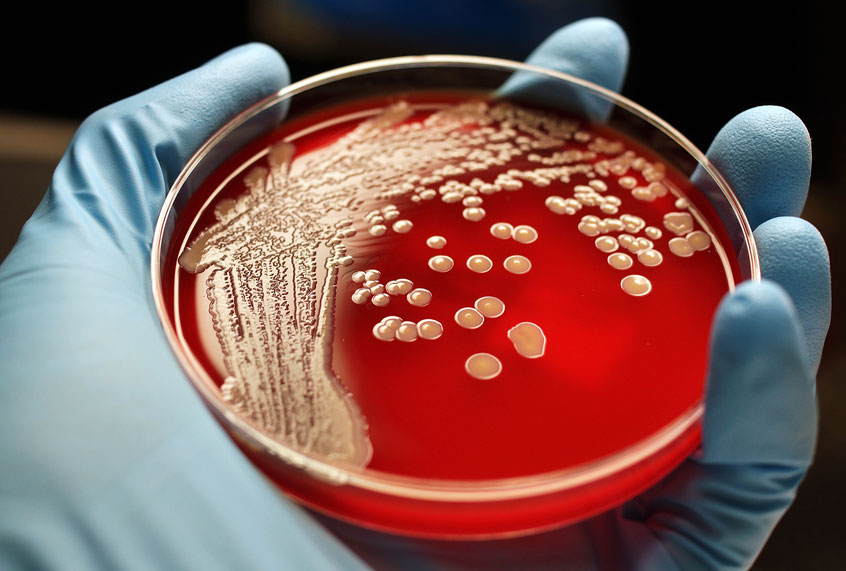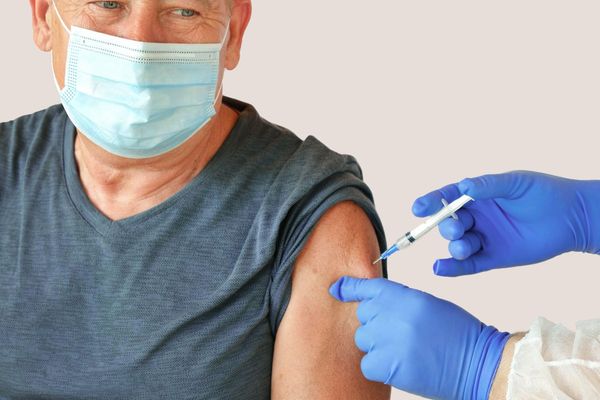
For years, human civilization has been embroiled in a quiet public health crisis: Some of our antibiotic drugs have stopped working. The over-prescription of antibiotics has turned the bugs we could once easily defeat into super-pathogens capable of evading even our best defenses, as they have evolved faster than we can design drugs to defeat them. By some estimates, antibiotic resistance could kill as many as 10 million people annually by 2050. Already, around 1.27 million people die every year from infections for which drugs do little to nothing.
To make matters worse, new drugs that address this problem aren't being developed fast enough, as there isn't much profit in developing new antibiotics. As Salon has previously reported, Big Pharma has mostly abandoned antibiotics development. The problem seems to be getting worse, leading to the rise of new sexually transmitted infections that don't respond to standard antibiotics. Worse, climate change may also be making drug-resistant superbugs even deadlier.
However, researchers may have recently made a breakthrough with a new drug called PLG0206, which has been demonstrated to be extremely potent against more than 1200 different drug-resistant bacteria. The results were published in PLOS One on September 16th, with much of the research conducted by scientists at Peptilogics, a biopharma company based in Pennsylvania. The discovery marks a rare and much-needed human victory in the ongoing war against antibacterial resistance.
PLG0206 is an antimicrobial peptide made up of a chain of amino acids, or organic compounds that appear in all living creatures. If you string enough amino acids together, you make what's called a protein. Peptides are the same thing, only smaller, and are widely used in medicine, with insulin being the best example.
Some peptides have toxic properties that can be weaponized against other microbes. Think of them as TNT against a tank. Our bodies generate tons of peptides to fight infections, but in the arms race between our immune systems and invaders — such as bacteria, viruses, fungi or parasites — sometimes the "tanks" can develop better defenses than the "bombs" we use. The result can mean serious illness or death.
Biologists have been developing antimicrobial peptides for years, but they come with some limitations. Some can be toxic to humans or are metabolized too quickly by the liver and kidneys to be effective.
But PLG0206 may be able to solve some of these problems and more. It's not only seemingly well-tolerated in humans, it also attacks biofilms, a slimy matrix of sugars that some bacteria produce to wall themselves off from attack. Best of all, PLG0206 seems unlikely to drive resistant mutations in the bacteria sampled, which means it may be an effective tool that won't wear out with use.
To test how effective PLG0206 may be, the researchers used multiple types of experiments. First, they put dozens of different strains of drug-resistant pathogens onto agar plates containing 5 percent sheep blood and incubated them overnight.
One quarter of one millionth of a gram was enough to knock out the bacteria, meaning that PLG0206 is extremely potent.
Then they added the peptide and took measurements at different intervals to see how fast and effective PLG0206 was at destroying infections. They also repeated the experiment with more than a dozen common antibiotics, including colistin, considered a "drug of last resort" because it has terrible side effects and is typically used only when all other medications fail. As a control, they also included microbial growths without drugs.
The peptide demonstrated rapid bacteria-killing activity against nearly 1300 different drug-resistant pathogens, sometimes in concentrations as low as 0.25 micrograms per milliliter. That means just one quarter of one millionth of a gram was enough to knock out the bacteria, meaning that PLG0206 is extremely potent.
But the researchers wanted to see how PLG0206 did in animal models as well, so they purposefully gave infections to rabbits and mice to see how well the peptide did at fighting certain illnesses.
The rabbits that received cefazolin alone all died within two weeks. But 75 percent of the rabbits treated with PLG0206 had no bacteria cultures on their implants, suggesting this peptide could make surgeries in humans a lot less likely to go wrong.
The rabbits were given surgery, which involved installing stainless steel wires on their legs and then injecting a strain of bacteria called Staphylococcus aureus into the injury. This model simulates one of the most common and most serious complications of joint surgery in humans.
When doctors want to restore the function of a joint, they may perform a type of surgery called an arthroplasty and install a metal implant. However, such implants are tantalizing surfaces for bacterial colonies to form and often cause difficult-to-treat infections.
After two days, giving time for an infection to form in the rabbits, the researchers injected PLG0206 into the joints, as well as cefazolin, a common antibiotic. The rabbits that received cefazolin alone all died within two weeks. But 75 percent of the rabbits treated with PLG0206 had no bacteria cultures on their implants, suggesting this peptide could make surgeries in humans a lot less likely to go wrong.
The researchers also gave urinary tract infections (UTIs) to several mice using E. coli, a bacteria notorious for causing food poisoning and UTIs. Mice were then administered with either PLG0206 or gentamicin, another common antibiotic. After 24 hours, the mice were euthanized with CO2, their kidneys and bladders were harvested, then ground up into a homogenous mixture. This slurry of mouse organs was diluted, then placed on a Petri dish and the level of bacteria growth was measured.
In most of the mice treated with PLG0206, even a low dose rendered E. coli cultures almost undetectable, around the same levels as the gentamicin group. This suggests PLG0206 could be another tool to fight UTIs, which is good news given that some UTIs involve E. coli strains that are resistant to gentamicin.
The U.S. Food and Drug Administration clearly sees big potential for PLG0206, as last July it granted Peptilogics "Fast Track" designation for treatment of arthroplasty infections. This designation speeds up the FDA's development and review process of new drugs that address unmet medical needs.
Not all drugs under the Fast Track program get approved, and it's not always "fast" either. Some fast-tracked drugs later turn out to not work as well as originally thought. These results should also be taken with a grain of salt, given that many of the researchers involved are financially invested in the drug's success. Nonetheless, all of this is a good indication that PLG0206 at least warrants a closer look.
In the last 60 years, only two new classes of antibiotics have entered the market, compared to more than 20 novel classes of antibiotics developed between 1930 and 1962. It doesn't take long for pathogens to evolve resistance to even our most powerful tools, meaning the so-called "Golden Age of Antibiotics" could be quickly waning. If such a thing were to happen, it would set modern medicine back to the 19th century, making minor injuries, chemotherapy or even childbirth life-threatening. We can't develop new and better tools for fighting infections fast enough.







